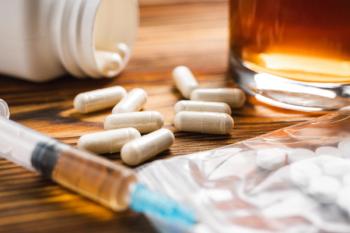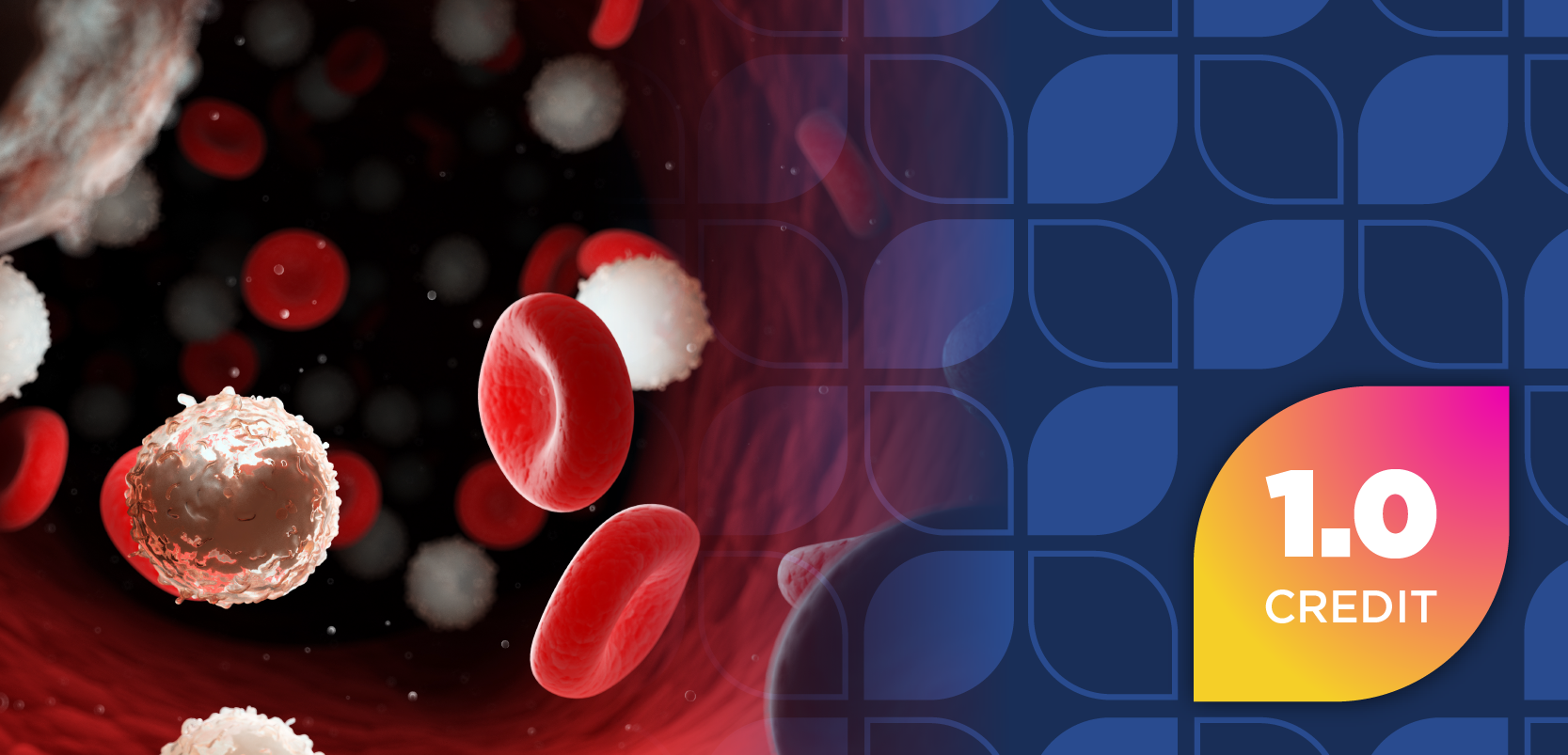
- October 2021
- Volume 87
- Issue 10
GERD Occurs in a Range of Severities
Finding relief can be frustrating and takes effort and time for many patients, but pharmacists can help.
Heartburn and acid regurgitation are common problems, and almost everyone experiences an episode occasionally after consuming fried foods or alcohol with a hearty meal, or during pregnancy. Some of these symptoms are categorized as functional heartburn or dyspepsia. For some people, acid regurgitation and heartburn become frequent, and they receive a diagnosis of gastroesophageal reflux disease (GERD). In the Western world, about 30% of the population has GERD.1-4 For patients, the condition is annoying, often painful and sleep disturbing, and disruptive to quality of life. For practitioners, GERD is time-consuming. For health care systems, it consumes more than its fair share of resources.5
GERD’s technical definition is reflux of gastric content into the esophagus, causing bothersome symptoms, impaired quality of life, or mucosal complications and damage. GERD is a motility disorder associated with long esophageal clearance time in about 50% of patients and a delayed gastric emptying in 30% to 40%.6 Classified as either erosive esophagitis (EE), with esophageal mucosal damage) or nonerosive esophageal reflux disease (NERD), with clinical symptoms without mucosal damage in the esophagus, GERD requires lifestyle intervention with which most pharmacists are familiar. It often needs pharmacologic management.7
About 70% of GERD falls into the NERD category. The remaining cases are EE, and clinicians grade them using the Los Angeles classification, which ranges from grade A (mild) to grade D (severe).8 EE is the more serious diagnosis, as it may manifest with several long- and short-term complications, including Barrett esophagus, bleeding, dysphagia, esophageal ulcers, peptic strictures, and, rarely, esophageal adenocarcinoma.6
TREATMENT TAKES TRIAL AND ERROR
Primary treatment goals are to heal esophagitis, improve health-related quality of life, prevent symptom recurrence, prevent or treat GERD-associated complications, and relieve symptoms.7
In patients with infrequent or mild episodes who have no alarm symptoms, such as digestive bleeding, dysphagia, odynophagia, or weight loss , clinicians can suggest antacids/alginates, histamine 2 receptor antagonists (H2RAs), and proton pump inhibitors (PPIs) as first-line treatments.7 The Figure7 summarizes usual step care. PPIs are generally preferred because they are more effective than other medications and less likely to be associated with resistance than H2RAs.7 Common adverse effects include abdominal pain, diarrhea, flatulence, headache, nausea, and vomiting.9
Prokinetics (cisapride, metoclopramide,) may improve gastric emptying and lower esophageal sphincter contractility, but the evidence does not indicate that prokinetics are better than antisecretory agents.10 Prokinetics have been linked to potential harm, such as cardiac arrhythmia.11,12 If patients have EE, a prescription-strength PPI is the drug of choice as initial therapy.7
WHEN USUAL DOSES DO NOT WORK
Up to 15% of patients with EE and 20% to 40% of patients with NERD continue to experience symptoms on standard therapy after 8 weeks of treatment.13 Guidelines recommend doubling the PPI dose if patients fail to respond to usual doses.14-16 Doing so increases healing rates17 and has been associated with sustained healing at 1 year in patients with refractory reflux esophagitis.18 Alternatively or in addition to doubling the dose, splitting the PPI dose into multiple daily doses has been shown to increase the median pH and the percentage of time with pH above 4.19 It is unclear whether such pH control improves clinical symptoms or mucosal healing, but a trial is reasonable, as it may help some patients. Combining an alginate (eg, Gaviscon) with a PPI can also increase symptom relief compared with PPI therapy alone.20,21
If symptoms continue after 8 weeks of treatment, the clinical team should consider endoscopic examination to rule out eosinophilic esophagitis, neoplasm, or peptic ulcer disease.14 Adjusting the medication therapy can require trial and error. Clinicians do not routinely test for this genetic mutation. Pharmacists should remember that cytochrome P450 (CYP) C19 is involved in PPI inactivation, and some patients are extensive CYP2C19 metabolizers. Esomeprazole and rabeprazole are CYP2C19-independent PPIs, whereas lansoprazole and omeprazole are CYP2C19 dependent. Switching to a CYP2C19-independent PPI empirically may improve symptom control.14
Relapse occurs frequently after treatment withdrawal. Clinicians can try prescribing a step-down strategy using H2RAs in patients requiring long-term antisecretory treatment. If cost is a concern, patients who take PPIs long term may be able to step down to an H2RA, which is generally less expensive.14
NEW PRODUCTS ON THE HORIZON
Investigators are making progress with potassium-competitive acid blockers (PCABs), which selectively inhibit H+/K+-ATPase in a dose-dependent manner by competing with potassium. They suppress acid suppression more rapidly than PPIs do, with symptom control evidence from the first day of administration. Investigators indicate that PPIs require molecular rearrangement under acidic conditions, whereas PCABs do not. This creates a faster onset and better intragastric pH levels.22 Some PCABs are approved in Asia. Their safety profile is similar to that of PPIs, but hypergastrinemia is a specific concern.23
CONCLUSION
Patients who have esophageal reflux are often frustrated, especially if treatment does not seem to help. Pharmacists can remind them to make lifestyle changes and give pep talks about medication adherence and returning to their prescribers if they are dissatisfied with treatment.
Jeannette Y. Wick, MBA, RPh, FASCP, is the assistant director of the Office of Pharmacy Professional Development at the University of Connecticut School of Pharmacy in Storrs.
REFERENCES
1. Peery AF, Dellon ES, Lund J, et al. Burden of gastrointestinal disease in the United States: 2012 update. Gastroenterology. 2012;143(5):1179-1187.e3. doi:10.1053/j.gastro.2012.08.002
2. El-Serag HB, Sweet S, Winchester CC, Dent J. Update on the epidemiology of gastro-esophageal reflux disease: a systematic review. Gut. 2014;63(6):871-880. doi:10.1136/gutjnl-2012-304269
3. Richter JE, Rubenstein JH. Presentation and epidemiology of gastroesophageal reflux disease. Gastroenterology. 2018;154(2):267-276. doi:10.1053/j.gastro.2017.07.045
4. Eusebi LH, Ratnakumaran R, Yuan Y, Solaymani-Dodaran M, Bazzoli F, Ford AC. Global prevalence of, and risk factors for, gastroesophageal reflux symptoms: a meta-analysis. Gut. 2018;67(3):430-440. doi:10.1136/gutjnl-2016-313589
5. Yadlapati R, Dakhoul L, Pandolfino JE, Keswani RN. The quality of care for gastroesophageal reflux disease. Dig Dis Sci. 2017;62(3):569-576. doi:10.1007/s10620-016-4409-6
6. Savarino E, de Bortoli N, De Cassan C, et al. The natural history of gastro-esophageal reflux disease: a comprehensive review. Dis Esophagus. 2017;30(2):1-9. doi:10.1111/dote.12511
7. Chapelle N, Ben Ghezala I, Barkun A, Bardou M. The pharmacotherapeutic management of gastroesophageal reflux disease (GERD). Expert Opin Pharmacother. 2021;22(2):219-227. doi:10.1080/14656566.2020.1817385
8. Lundell LR, Dent J, Bennett JR, et al. Endoscopic assessment of esophagitis: clinical and functional correlates and further validation of the Los Angeles classification. Gut. 1999;45(2):172-180. doi:10.1136/gut.45.2.172
9. Prilosec. Prescribing information. AstraZeneca Pharmaceuticals LP; 2012. Accessed September 22, 2021. https://www.accessdata.fda.gov/drugsatfda_docs/label/2012/019810s096lbl.pdf
10. Sigterman KE, van Pinxteren B, Bonis PA, Lau J, Numans ME. Short-term treatment with proton pump inhibitors, H2-receptor antagonists and prokinetics for gastroesophageal reflux disease-like symptoms and endoscopy negative reflux disease. Cochrane Database Syst Rev. 2013;2013(5):CD002095.
11. Zhang H, Yang Z, Ni Z, Shi Y. A meta-analysis and systematic review of the efficacy of twice daily PPIs versus once daily for treatment of gastroesophageal reflux disease. Gastroenterol Res Pract. 2017;2017:9865963. doi:10.1155/2017/9865963
12. Giudicessi JR, Ackerman MJ, Camilleri M. Cardiovascular safety of prokinetic agents: a focus on drug-induced arrhythmias. Neurogastroenterol Motil. 2018;30(6):e13302. doi:10.1111/nmo.13302
13. Mermelstein J, Chait Mermelstein A, Chait MM. Proton pump inhibitor-refractory gastroesophageal reflux disease: challenges and solutions. Clin Exp Gastroenterol. 2018;11:119-134. doi:10.2147/CEG.S121056
14. Katz PO, Gerson LB, Vela MF. Guidelines for the diagnosis and management of gastroesophageal reflux disease. Am J Gastroenterol. 2013;108(3):308-328. doi:10.1038/ajg.2012.444
15. Yadlapati R, Vaezi MF, Vela MF, et al. Management options for patients with GERD and persistent symptoms on proton pump inhibitors: recommendations from an expert panel. Am J Gastroenterol. 2018;113(7):980-986. doi:10.1038/s41395-018-0045-4
16. Kahrilas PJ, Shaheen NJ, Vaezi MF, et al. American Gastroenterological Association medical position statement on the management of gastroesophageal reflux disease. Gastroenterology. 2008;135(4):1383-1391.e13915. doi:10.1053/j.gastro.2008.08.045
17. Kinoshita Y, Hongo M, Japan TWICE Study Group. Efficacy of twice-daily rabeprazole for reflux esophagitis patients refractory to standard once-daily administration of PPI: the Japan-based TWICE study. Am J Gastroenterol. 2012;107(4):522-530. doi:10.1038/ajg.2012.19
18. Kinoshita Y, Kato M, Fujishiro M, et al. Efficacy and safety of twice-daily rabeprazole maintenance therapy for patients with reflux esophagitis refractory to standard once-daily proton pump inhibitor: the Japan-based EXTEND study. J Gastroenterol. 2018;53(7):834-844. doi:10.1007/s00535-017-1417-z
19. Sugimoto M, Shirai N, Nishino M, et al. Rabeprazole 10 mg q.d.s. decreases 24-h intragastric acidity significantly more than rabeprazole 20 mg b.d. or 40 mg o.m., overcoming CYP2C19 genotype. Aliment Pharmacol Ther. 2012;36(7):627-634. doi:10.1111/apt.12014
20. Manabe N, Haruma K, Ito M, et al. Efficacy of adding sodium alginate to omeprazole in patients with nonerosive reflux disease: a randomized clinical trial. Dis Esophagus. 2012;25(5):373-380. doi:10.1111/j.1442-2050.2011.01276.x
21. Reimer C, Lodrup AB, Smith G, Wilkinson J, Bytzer P. Randomised clinical trial: alginate (Gaviscon Advance) vs. placebo as add-on therapy in reflux patients with inadequate response to a once daily proton pump inhibitor. Aliment Pharmacol Ther. 2016;43(8):899-909. doi:10.1111/apt.13567
22. Oshima T, Miwa H. Potent potassium-competitive acid blockers: a new era for the treatment of acid-related diseases. J Neurogastroenterol Motil. 2018;24(3):334-344. doi:10.5056/jnm18029
23. Kojima Y, Takeuchi T, Sanomura M, et al. Does the novel potassium-competitive acid blocker vonoprazan cause more hypergastrinemia than conventional proton pump inhibitors? A multicenter prospective cross-sectional study. Digestion. 2018;97(1):70-75. doi:10.1159/000484217
Articles in this issue
almost 4 years ago
OTC Case Studies: Inflammatory Bowel Diseasealmost 4 years ago
Moms Are Not OK: Understand, Recognize, and Treat Postpartum Depressionalmost 4 years ago
Generics and Biosimilars Have Critical Differencesalmost 4 years ago
Pet Peeves: October 2021almost 4 years ago
Case Studies: October 2021almost 4 years ago
Clinical Pharmacology Update: Brexafemme From Scynexis, Incalmost 4 years ago
October 2021 OTC Product Newsalmost 4 years ago
CGM Improves Outcomes for Patients Using Only Basal Insulinalmost 4 years ago
Pharmacies Play Key Role as Center of Immunization ServicesNewsletter
Stay informed on drug updates, treatment guidelines, and pharmacy practice trends—subscribe to Pharmacy Times for weekly clinical insights.

























































































































































































































